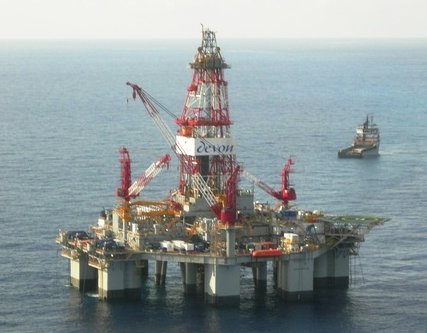Oil & Gas Drilling Black Sea, Romania / Exxon OMV Natural / Chevron / Carlyle Group / Sterling
BACKGROUND DETAILS
Above: Claims map and 2009 settlement boundary
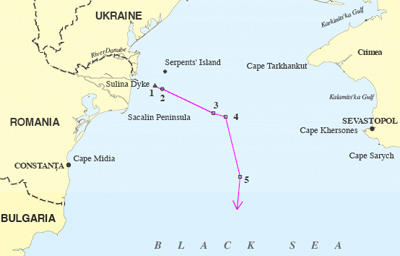
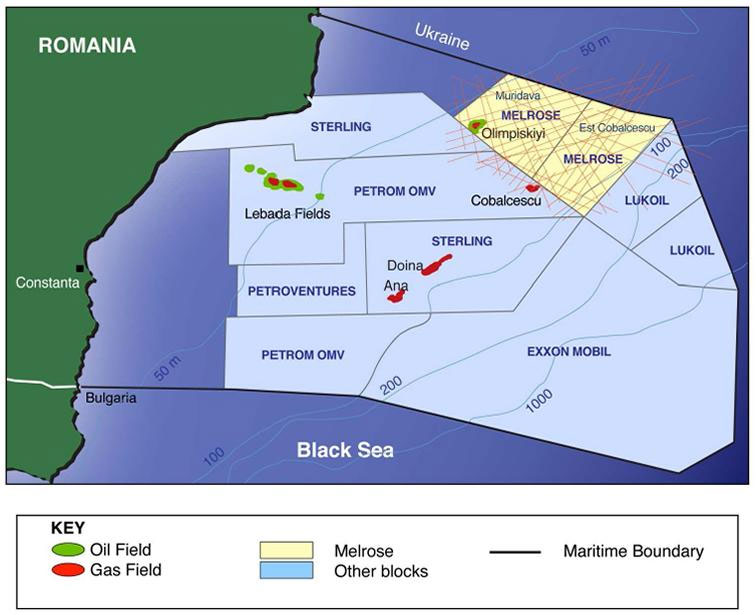
Drilling Started in Black Sea EXXONMOBIL / OMV PETROM – October 2014
Drilling Platform EXXONMOBIL / OMV PETROM – March 2014
Gas Discovery EXXONMOBIL / OMV PETROM – February 2012
Gas Fueled Power Plant PETROM EXPANDING – April 2012 The Black Sea drilling consessions map indicates zone within which Exxon/OMV discovered gas at 1000 meters depth. Carlyle Group pays USD 42 mln for Sterling’s Romania Black Sea oil drilling licenses
Romania-Insider / March 27, 2015 Canadian oil company Sterling Resources will sell its Romanian business to Carlyle International Energy Partners, an affiliate of The Carlyle Group, the company has announced.
The transaction, which includes oil drill license blocks 13 Pelican, 15 Midia, 25 Luceafarul and 27 Muridava, structured as a corporate sale of the company’s wholly-owned subsidiary Midia Resources SRL, will finalize around the end of the second quarter of 2015.
CIEP will pay USD 42.5 million to Sterling when the transaction is completed, prior to any Romanian tax liabilities.
Sterling has decided to sell its Romanian business in order to focus its financial resources in the UK North Sea.“The sale will leave Sterling as a predominantly UK business focused on the high quality Breagh field, plus contingent resources with very minor ongoing costs in the Netherlands. We expect that this refocusing and simplification of our portfolio will make the company a more attractive candidate for a merger or corporate sale, benefitting all stakeholders,” said Jake Ulrich, Sterling’s Chief Executive Officer.
Sterling holds a 65% operated interest in blocks 13 Pelican and 15 Midia, a 50% operated interest in block 25 Luceafarul, and a 40% non-operated interest in block 27 Muridava, all in the Romanian Black Sea. Sterling is a Canadian-listed international oil and gas company with assets in the United Kingdom, Romania and the Netherlands.
The Carlyle Group is a global alternative asset manager with more than USD 194 billion of assets under management across 128 funds and 142 fund of funds vehicles.
Carlyle International Energy Partners has two main investment vehicles, according to its data: Varo Energy B.V and Discover Exploration Limited, both acquired in 2013.
Irina Popescu, irina.popescu@romania-insider.com
ExxonMobil and OMV Petrom start exploring in Romania’s Neptun block in the Black Sea
Romania-Insider / October 27, 2014
ExxonMobil Exploration and Production Romania Limited, the local subsidiary of American group ExxonMobil, and OMV Petrom, the largest local group, have started exploring a new prospect in the Neptun offshore block, in the Romanian waters of the Black Sea, the two companies announced on Monday, October 27.
The Ocean Endeavour rig, which was commissioned by Exxon and OMV Petrom to make further exploration drills in the Neptun block, is drilling the Pelican South-1 wildcat well about 155 kilometers offshore in the Romanian sector of the Black Sea. The Pelican South-1 well will test a new geological structure on the Neptun Block.
This may result in a new hydrocarbons discovery in the Neptun block, after the natural gas discovery announced in the beginning of 2012. ExxonMobil and OMV Petrom announced in February 2012 that they discovered a natural gas accumulation of between 42 and 84 billion cubic meters in the Neptun block of the Black Sea. Since then, the two companies made further explorations to evaluate the commercial viability of the gas resources found.
Earlier in October, the Ocean Endeavour rig completed drilling the Domino-2 well in the Neptun block and data from the well are currently being evaluated by Exxon and OMV Petrom specialists.
“Exploration for oil and gas in frontier areas is complex and very detailed, often taking years to complete. A thorough understanding of the geology is essential prior to making the significant investments required to develop such a discovery,” said John Knapp, managing director of ExxonMobil’s affiliate in Romania.
If the two companies decide to start the exploitation of the gas resources in the Neptun block, this would require significant investments. This is why they have been asking the Romanian authorities for a favorable and stable fiscal framework.
“The Black Sea region plays a central role in our strategy and we allocate significant financial and technical resources to the offshore projects. We are encouraged by the good results so far, in shallow and deep waters. However much of the activity in the Black Sea deep-water area is of a frontier, pioneering nature, involving high investment risks and therefore requiring a stable investment framework,” said Gabriel Selischi, member of OMV Petrom Executive Board responsible for exploration and production.
ExxonMobil Exploration and Production Romania and OMV Petrom each hold 50% of the deep-water sector of the Neptun block.
New ExxonMobil – OMV oil drilling platform in Romania
Nine O’Clock Mar 13, 2014
President Basescu met with Johnny L. Hall, Executive Vice-Chairman of ExxonMobil Exploration Company, and Mariana Gheorghe, Executive General Manager of OMV Petrom.
At the meeting, President Basescu was informed about the arrival in Romania in the months ahead of a new oil drilling platform hired by the ExxonMobil – OMV consortium to assess the size of the oil deposits in the Neptun block in the Black Sea. The President asked ExxonMobil and OMV-Petrom experts to consider both Romania and Moldova when analysing the domestic market for natural gas resources to be exploited in the Black Sea, reads the release.
In his turn, Prime Minister Victor Ponta also welcomed a delegation of board members of ExxonMobil and Petrom at Palatul Victoria yesterday to discuss exploration and exploitation projects devised by these companies with regard to energy resources in the Romanian section of the Black Sea.
“On this occasion, Johnny Hall, the executive vice-chairman of Exxon Mobil Exploration, acknowledged the conditions for making oil and gas investments in Romania and the Romanian Government’s efforts to encourage the development of projects in the Romanian section of deep waters of the Black Sea,” a Government press release notes. Furthermore, it is mentioned Prime Minister Ponta acknowledged the two companies’ efforts to develop these projects and encouraged other Romanian potential service providers to become involved in these operations, as the projects unfold, and to further develop Romanian professional skills required by such projects.
Last year, Exxon Mobil, Petrom, Shell and the Ukrainian state company Nadra agreed to establish a partnership in exploiting a gas perimeter in the Black Sea. Romanian news website Hotnews.ro suggests a link between the current talks with president Basescu and that agreement, on the background of the tensions in Ukraine and Crimea region.
Natural gas deposit equivalent to 3-6 times the domestic consumption, found in the Black Sea
Nine O’Clock Feb. 22, 2012
OMV Petrom, and ExxonMobil Exploration and Production Romania yesterday announced a significant discovery under the Black Sea, with preliminary estimations speaking about a natural gas deposit of 42-84 billion cubic meters, equivalent to 3-6 times the annual consumption of Romania. The drilling operations conducted by the two companies in the Black Sea started at the end of 2011 and are about to be finalised, reads a press release issued Wednesday by OMV Petrom.
First production could be obtained at the end of this decade, at the earliest. The Domino -1 rig is located in the Neptun block, 170 km off the Romanian coast, in water with the average depth of 1,000 metres, and is drilled with state-of-the-art technology. It is estimated that the total depth of the well will be 3,000 metres under the sea level, HotNews.ro informs. The Neptun perimeter has a surface of about 9,900 square km, with a depth of water between 50 and 1,700 metres. In November 2008, ExxonMobil Exploration and Production Romania Limited, and Petrom signed an accord through which ExxonMobil acquired a stake of 50 pc in the deep-sea zone of the Neptun perimeter.
Deepwater Champion was built in Korea and has been specifically designed for easy access to and from the Black Sea. Deepwater Champion is a double-hull sea drilling vessel that can operate in moderate environments, and down to a maximum depth of 3,000 metres. The ship was built in 2011 by Hyundai Heavy Industries, Korea. Deepwater Champion can operate in a maximum water depth of 3,000 metres (which can be extended to 3,600 m), and can drill wells with a maximum depth of 12,191 metres.
Meanwhile, despite the severe economic crisis, Petrom ended last year with the record profit of RON 3.759 bln (EUR 887 M). The gain of the company increased to 72% against last year, according to financial data presented yesterday morning to the Bucharest Stock Exchange, Mediafax informs. This is the biggest profit ever registered by a company in Romania. The increase of the profit posted by Petrom was mainly driven by record sales worth RON 22.61 bln (EUR 5.3 bln), up 21 pc from the previous year, after an increase by 17 pc in the last quarter of 2011, to RON 6.39 bln (EUR 1.5 bln).Another reason for the record profit was represented by the higher prices charged for fuel. Last year, oil became 40 pc more expensive.
Petrom CEO Mariana Gheorghe explains in a press release that, looking back, 2011 was a year of challenges coming from abroad, but with sound financial results and a remarkable operational performance. This is the result of considerable investment efforts, efficient cost management, as well as favourable prices of crude, the CEO of Petrom stated. “Demand for natural gas advanced by 3 pc, from 13.8 billion cubic metres in 2010, and our sales were in line with the market,” the CEO of OMV Petrom mentioned. OMV Petrom is a pillar of stability and a trustworthy partner of the Romanian economy in terms of the taxes it pays to the state budget, and also when it comes to providing energy to consumers and investments, Mariana Gheorghe said. “First of all, we speak about our contribution to securing the energy supply. We secured between 35 pc and 40 pc of the energy consumption, no matter if we speak about oil or gas. The second pillar is the contribution to the state budget. Each year, we secured between 10 pc and 11 pc of the incomes to the budget of the country. Then, there is the contribution to economic development, through the investments we made. Over the last seven years, we reinvested the entire operating income before depreciation,” the Petrom official said.For 2012, Petrom estimates that the average annual price of crude will remain above 100 USD, so we will not see significant changes in fuel prices. The company wants to invest EUR 1 bln this year.
As for the Romanian economy, Petrom officials estimate that “performance will depend both on the economic conditions abroad and on the successful implementation of adequate economic policies at home. Although the economic growth is estimated at 1.5 pc in 2012, there are significant risks that this forecast might prove to be optimistic.” Mariana Gheorghe says that “the parliamentary elections of this year might increase the political risk, which might have an unwanted effect on the country’s macroeconomic stability and reforms. Consolidating the public debt, corroborated with the continuous efforts aimed at curbing the deficit in the public sector and further promoting structural reforms should remain the priorities of the government for 2012.”
Oil and gas company Petrom is considering building a new power plant with a similar capacity to the one at Brazi, based on the recent gas discovery in the Black Sea, said Carmencita Constantin, head of the energy and environment division with the Institute of Energy Studies and Design, quoted by Romanian media.
Petrom considering new power plant after Black Sea gas discovery
Business Insider – April 25, 2012
Petrom invested EUR 500 million in its 860 MW gas-fired plant in Brazi, having started construction work on the plant in 2008. It is the largest private greenfield power generation project in Romania. The plant was not yet inaugurated after Petrom announced earlier this year a delay in its opening, initially scheduled for this year. Petrom recently discovered, together with Exxon, a natural gas reserve in Romania’s Black Sea, some 84 billion cubic meters of gas in the Neptune perimeter. Petrom, majority owned by Austrian OMV, expects a new record profit this year, of some EUR 867.8 million (RON 3.784 billion), higher than last year- when expressed in local currency- even if its turnover is forecast to drop in 2012. The budgeted turnover for 2012 is of EUR 3.6 billion, down 4.6 percent on 2011.
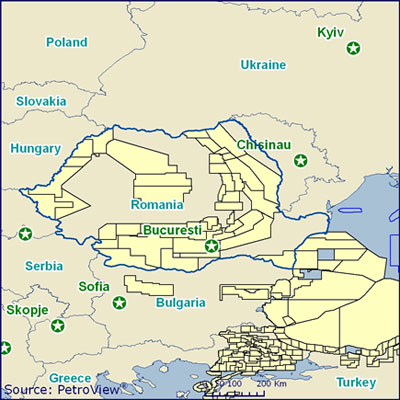
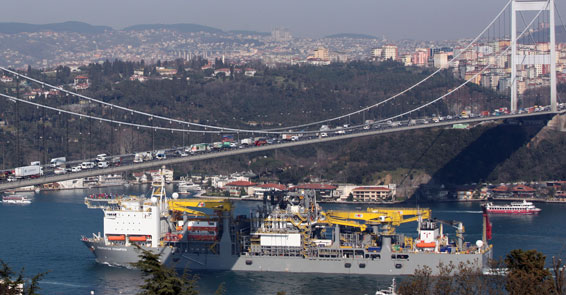
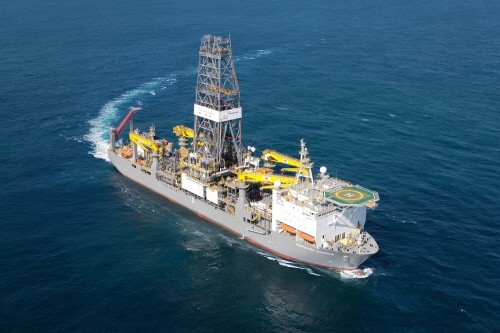
Gov’t approves oil agreements with Chevron
Nine O’Clock / March 28, 2012
The government approved the oil agreements of concession in view of exploration-development-exploitation concluded by the National Agency for Mineral Resources (ANRM) and Chevron, the second-largest oil group of the United States of America (USA), Mediafax reports. For the perimeters
Vama Veche, Adamclisi and Costinesti, the approval was granted after a meeting between Premier Mihai Razvan Ungureanu and the American group. The Executive also decided that the three agreements came into force yesterday. The annex with the main provisions of the three agreements between ANRM and Chevron has been classified. The oil agreements were approved by the Executive through Government decision, after PM Mihai Razvan Ungureanu met Chevron officials at the Victoria Palace. According to official sources, Chevron wanted to make sure that it may start drilling for unconventional gas in Romania this year, as Bulgaria recently withdrew the license of the American company. Business-Insider / April 2, 2012American company Chevron will invest USD 65 million in exploring for shale gas on Romania’s coast, at Vama Veche, Costines¸ti and Adamclisi. The company still needs clearance from the country’s Environment Ministry. Minister Laszlo Borbely said he will only give the greenlight for the project if it doesn’t pose any risks to the environment.
Romania granted American company Chevron the right to explore and exploit shale gas on three perimeters in Constanta county, at Vama Veche, Adamclisi and Costinesti – all on the coast. Chevron also has concession agreements with Romania in the Barlad area, in the North East of the country.
Chevron, the second largest oil and gas company in the US, has recently had a license for exploring shale gas in neighboring Bulgaria canceled over environmental issues.
Commentators say Romania’s proven natural gas reserves could last for 10 more years, which would make the country dependent on Russian gas after local reserves are depleted, and therefore more inclined to diversify sources and use unconventional gas. Hungarian MOL and Canadian Sterling have also showed interest in searching for shale gas in Romania.
Bulgaria canceled Chevron’s exploitation license for shale gas as it prepares to forbid drilling for such gas over environmental concerns.
Romania, Hungary and Bulgaria together have recoverable shale gas resources of some 538 billion cubic meters, according to the Energy Information Administration. Poland has 5.2 trillion cubic meters of shale gas resources, according to the same source.
Shale gas is natural gas trapped during formation in shale strata. It has become an important source of gas in the US, but environmentalists say it might aggravate global warming, as it emits larger amounts of greenhouse gas methane than conventional gas does. Although using shale gas gives off less methane than coal.
